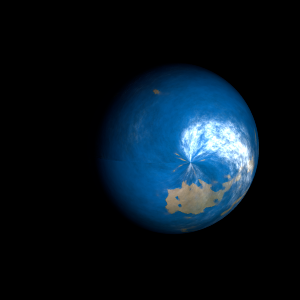|
|
Space Astro
|
Info for exoplanet "Ryojuno"
| Scientific (actual) data |
|---|
| Name | K2-213 b |
| Planet status | Confirmed |
| Radius | 0.135 |
| Orbital period | 8.13087 |
| Inclination | 87.862 |
| Discovered | 2018 |
| Updated | 2021-02-05 |
| Tconj | 2457400 |
| Publication | Published in a refereed paper |
| Detection type | Primary Transit |
| Alternate names | 2MASS J00523368+0330277 b, EPIC 220341183 b, EPIC 220341183.01, TYC 15-1059-1 b, WISE J005233.68+033027.9 b |
| Star name | K2-213 |
| Right ascension | 13.14° |
| Declination | 3.51° |
| Mag j | 11.034 |
| Mag h | 10.729 |
| Star distance | 394.05 |
| Star metallicity | 0.25 |
| Star mass | 1.07 |
| Star radius | 1.2 |
| Star temperature | 5794 |
| Star alternate names | 2MASS J00523368+0330277, EPIC 220341183, TYC 15-1059-1, WISE J005233.68+033027.9 |
| Wikipedia article | K2-213 b |
Back
| |
| Fictional info (?) |
|---|
| Suggested name | Ryojuno |
| Planet type | Cold planet |
| It has the longest rotation period (445 days) of any planet in its solar system and rotates in the opposite direction to most other planets. |
| Atmosphere | Nitric oxide | 30% |
| Nitrogen | 30% |
| Ammonium hydrosulfide (NH4SH) | 25% |
| Formaldehyde | 6.3% |
| Neon | 4% |
| Ethane | 3.3% |
| Ozone | 0.3% |
| Xenon | 0.046% |
| Carbonyl sulfide | 1.3E-5% |
| Atmospheric pressure | 4 bar |
 |
| No known satellites |
| Google search for Ryojuno |
|
Website by Joachim Michaelis
|
|
|
|